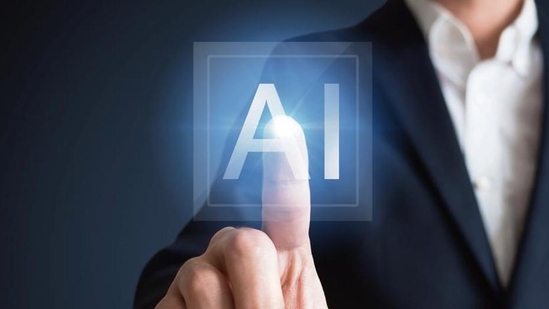AI and gender gap: Ensuring equity in the AI industry
This article is authored by Sowjanya Kanuri, director, ACT For Women and ACT For Education.
Artificial intelligence (AI) is often seen as a great equaliser, improving access to education, health care, and public services. However, if not designed carefully, AI can also reinforce existing inequalities, notable among them being gender biases. To truly lead to transformative, positive change, women need to be key stakeholders across the life cycle of AI based technologies--from their development to their accessibility and usage.

AI systems are only as good as the data they are trained on. When training data is not representative, AI can reinforce existing gender stereotypes. A study found that 44% of AI models across industries exhibit gender bias, and these can often have devastating real-world consequences. For instance, gender bias in AI-driven credit scoring systems can make it harder for women to access loans, despite AI being perceived as fairer than human decision-making. To address these biases, AI developers must actively assess gender-related disparities at every stage--data collection, algorithm design, and model evaluation. Collaborations with gender experts, social scientists, and grassroots organisations can help create fairer AI models. Karya is a non-profit organisation that enables economic opportunities for low-income Indian populations through digital microtasks, the output of which goes into training large datasets used by big tech companies to build their AI models. Karya has enabled $ 800,000 in wages for over 35,000 workers in the last four years, with over half of their workers being women. In line with their mission of being an ethical data company, they are currently working on a project with 30,000 women in rural India that is aimed at identifying and mitigating gender biases that exist in AI technologies.
Despite growing smartphone ownership among women in India, digital literacy and access to AI-driven technologies remain significant challenges. According to the 2024 GSMA Gender Gap Report, women’s access to mobile internet in India still lags behind men’s, limiting their ability to benefit from AI-based services. Many AI-powered applications, such as chatbots, require structured text inputs, making them harder for women with lower digital literacy to use. Designing AI systems with a human-centred approach--where women are actively involved in usability testing--can make these technologies more accessible. To democratise AI adoption, organisations and policymakers must design solutions that are intuitive, inclusive, and relevant for women from diverse socio-economic backgrounds.
Women remain underrepresented in AI roles, with only 22% of the global AI workforce being female--and the gap is even starker in leadership positions. Closing this gender gap is critical because diverse teams lead to fairer, more inclusive AI technologies. As a rapidly evolving sector, public and private efforts must synchronise to allow women to not only thrive but also lead in technology roles. There have been notable initiatives by the Indian government like the Vigyan Jyoti scheme for girls in classes 9 to 12 and the Women in Science and Engineering (WISE) programme for those who have completed their higher education as well as industry leaders like Microsoft. However, these efforts must be scaled up to benefit a larger population. Encouraging more women to pursue AI careers through scholarships, mentorship, and industry partnerships will help build a more inclusive tech ecosystem.
To build AI solutions that truly work for India, inclusivity must be at the core of AI development. Homegrown AI ventures and policymakers can lead the way by ensuring that AI is designed for all, especially for women who face barriers in both access and participation. By promoting gender-sensitive AI design, encouraging female leadership in AI, and making AI-based solutions more accessible when it comes to deployment, India can harness AI’s transformative power for women’s empowerment in ways that are both impactful and equitable.
This article is authored by Sowjanya Kanuri, director, ACT For Women and ACT For Education.
All Access.
One Subscription.
Get 360° coverage—from daily headlines
to 100 year archives.



HT App & Website







